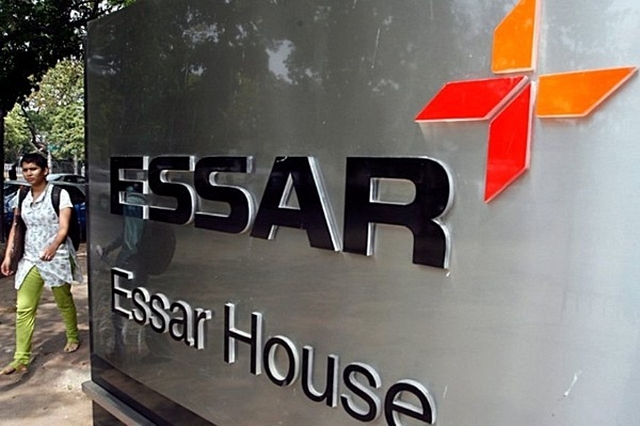
Two Years And Counting: NCLAT Order On Essar Steel Sends IBC Process Into A Tailspin
It is up to the Supreme Court to render “complete justice” to secured creditors by putting the unwarranted interpretation of the IBC law by Justice Mukhopadhaya in its place: the dustbin.
If it does not do so, the government should change the IBC law to protect financial creditors’ interests. After all, most of the creditors are funded by the taxpayers.
Judicial habits picked up during previous stints at the highest court are bedevilling the insolvency courts. Under Article 142 of the Constitution, the courts are empowered to make the law in order to render “complete justice”, and not merely interpret it. The Supreme Court has used this article to write new laws even without the legislature having anything to do with it.
But no such powers are given to the National Company Law Appellate Tribunal (NCLAT), headed by retired Supreme Court judge S J Mukhopadhaya, but he has still gone ahead and read meanings in the Insolvency and Bankruptcy Code (IBC) that were never quite intended by the legislature.
Justice Mukhopadhaya has disturbed the basic underpinnings of the credit market – that secured creditors must get priority over unsecured ones – by mandating that the Committee of Creditors (CoC) must give near-equal treatment to operational creditors when resolving cases referred to the National Company Law Tribunal (NCLT) under the IBC.
The order, which came in the Essar Steel case, effectively ensures that financial creditors like banks, which are owed more than Rs 49,000 crore, will get far less from the winning bid of Rs 42,000-and-odd crore offered by ArcelorMittal than earlier anticipated. Initially, the CoC offered Rs 1,000 crore to operational creditors, under Mukhopadhaya’s ruling, banks will get only 60 per cent of the money, and operational creditors most of the rest.
This is bizarre, for it essentially means that secured creditors like banks are being treated on a par with unsecured lenders, making nonsense of the entire lending rate regime and also the IBC law which authorises the CoC to take a call on how much operational creditors are to be compensated from the proceeds of resolution.
Under clause 30(2)(b) of the IBC, the CoC has to fulfil only one condition in the case of payments to operational creditors, and that is about making sure that they get sums at least equivalent to the liquidation value of the company. The government, however, muddied the waters last year, when it brought in amendments that suggested that operational creditors should not be left out in the cold.
Operational creditors include those making supplies to a company for production, and their dues usually involve only limited credit arrangements, as they get repaid once sales happen. Their credit arrangements seldom run beyond a few months. Financial creditors like banks, on the other hand, lend resources for longer terms at lower rates of interest, and that is the reason why the CoC is broadly empowered to prioritise its share of repayments over operational creditors, as long as the latter get at least liquidation value against their dues. Also, financial creditors choosing to accept a resolution plan to keep a company afloat also need to continue providing credit to it, something which operational creditors need not do. Except in the case of monopoly suppliers, companies back in the black can always shift to another supplier.
If the NCLAT, moved by some unwarranted sense of fairness to all creditors, now wants to overturn this procedure established by the IBC law, it will not only be guilty of mangling the law, but also delaying settlements. The Essar Steel case has dragged on for nearly two years when the IBC prescribes a 270-day deadline for resolution. The appellate tribunal has thus ensured that the case will now drag on in the Supreme Court. The CoC has already announced a decision to challenge the NCLAT in the highest court.
As Latha Venkatesh argues in this analysis for CNBC TV18, “The NCLT was intended to ensure the process has been followed, not substitute its commercial judgement in place of the CoC’s. By setting aside the position of the CoC, the Essar judgment can destroy the entire edifice of the IBC, since creditors and the resolution applicant will be willing to go ahead with a plan to rescue a company only if it makes commercial sense to them. In principle, therefore, the NCLT and the NCLAT must abide by the commercial judgement of the CoC. Else, no stressed asset will be sold, and the IBC’s purpose will not be served.”
It is now up to the Supreme Court to render “complete justice” to secured creditors by putting this unwarranted interpretation of the IBC law by Justice Mukhopadhaya in its place: the dustbin.
If it does not do so, the government should change the IBC law to protect financial creditors’ interests. After all, most of the creditors are funded by the taxpayers.